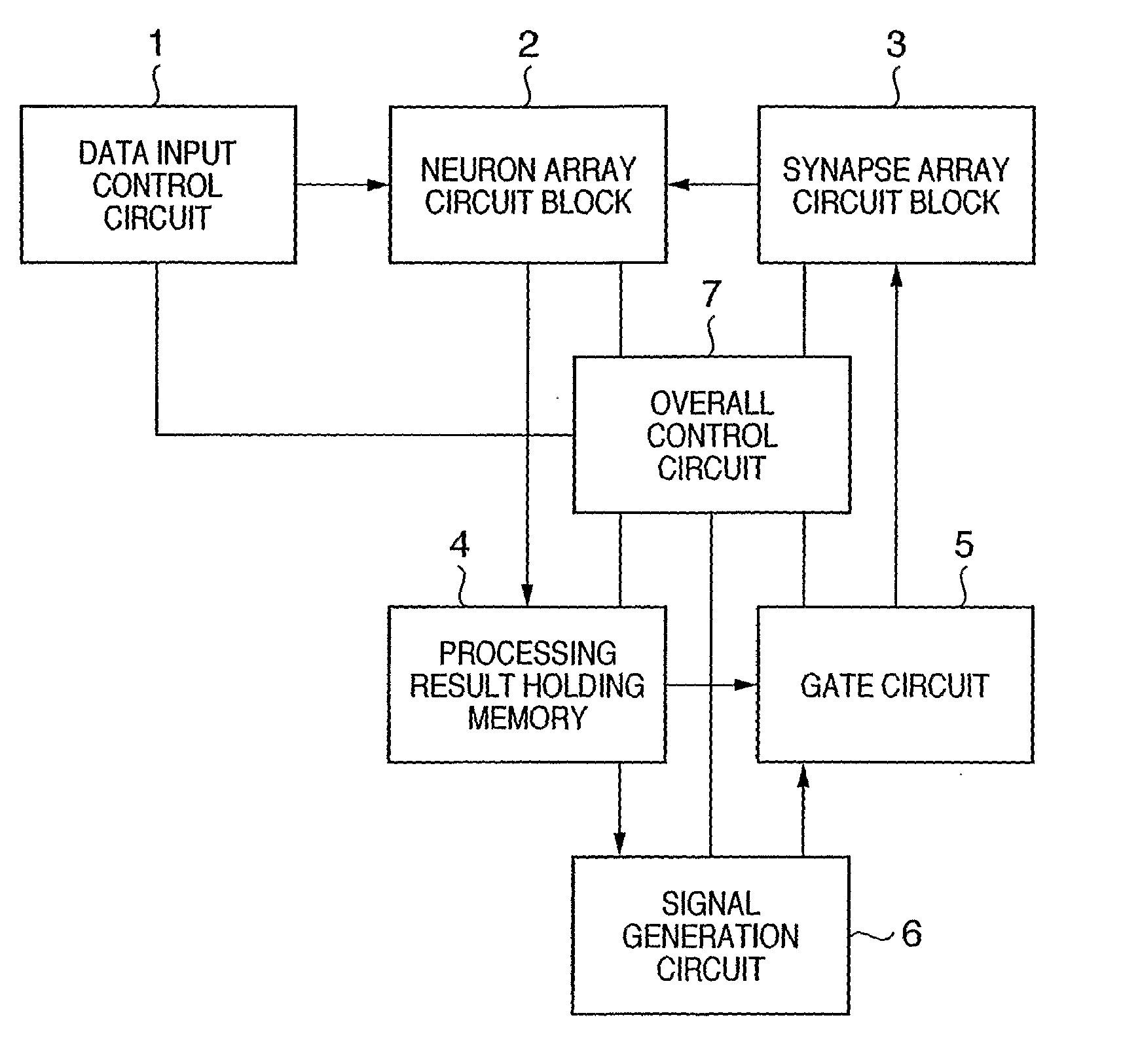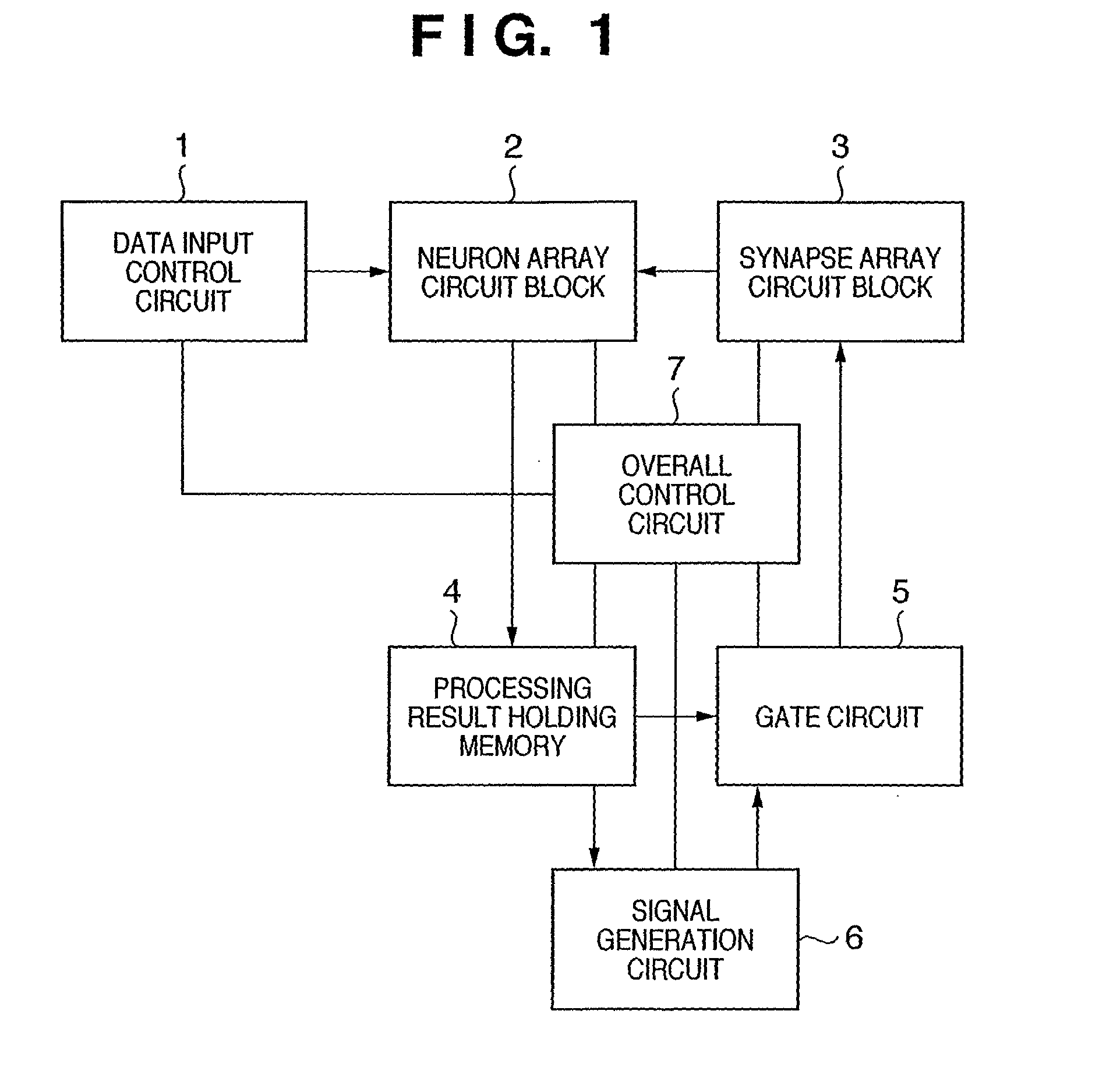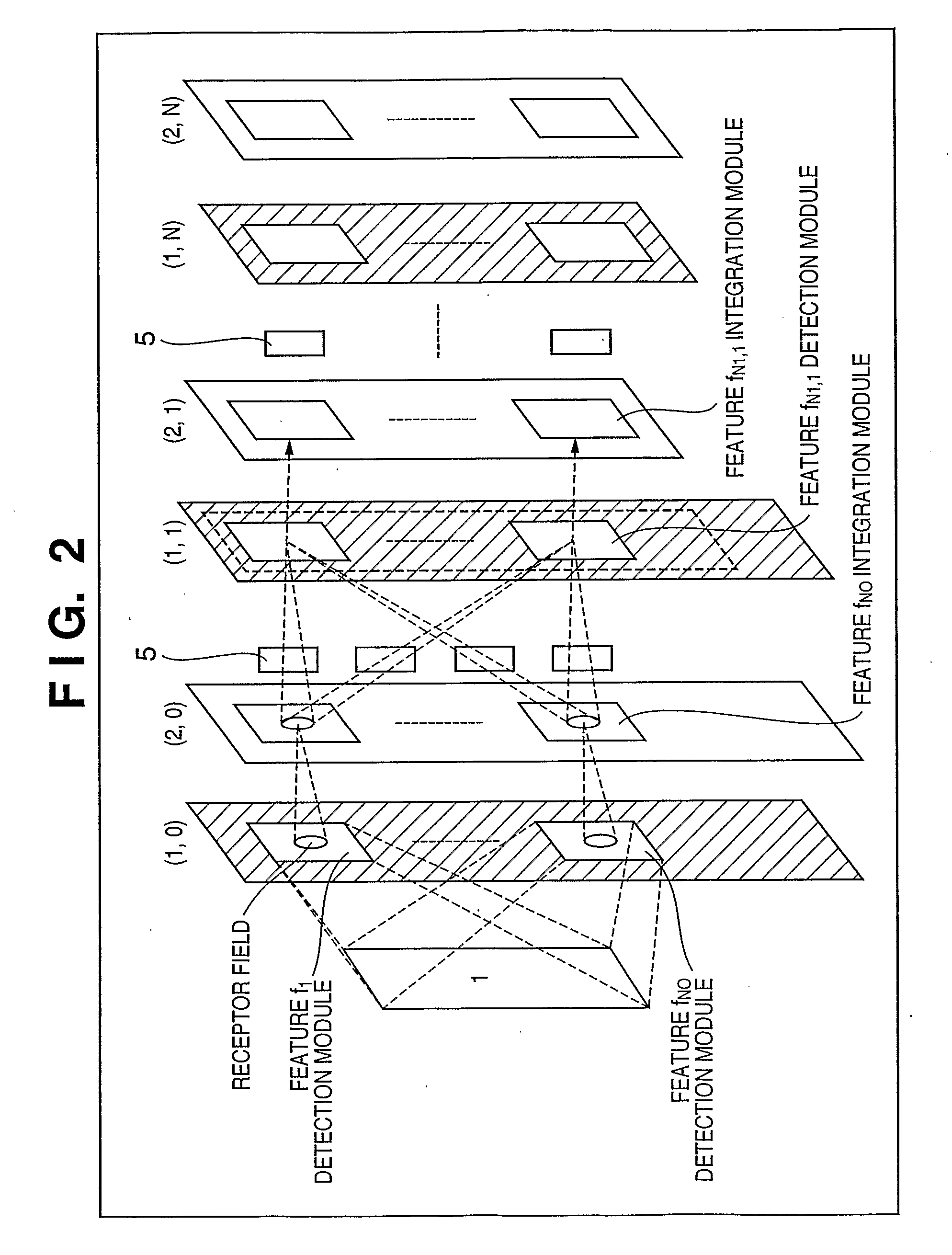Parallel Pulse Signal Processing Apparatus, Pattern Recognition Apparatus, And Image Input Apparatus
a pulse signal and pattern recognition technology, applied in the field of parallel pulse signal processing circuit or neural network, can solve the problems of circuit scale, inability to implement remaining arrangements as electronic circuits, and increase in processing time, so as to reduce circuit scale and power consumption
- Summary
- Abstract
- Description
- Claims
- Application Information
AI Technical Summary
Benefits of technology
Problems solved by technology
Method used
Image
Examples
first embodiment
[0097]FIG. 1 shows the arrangement of the main part of a parallel pulse signal processing apparatus. The parallel pulse signal processing apparatus includes, as main constituent elements, a data input control circuit 1, neuron array circuit block 2, synapse array circuit block 3, processing result holding memory 4, gate circuit 5, signal generation circuit 6, and overall control circuit 7.
[0098] Referring to FIG. 1, the data input control circuit 1 is a control circuit to input image data or the like from a sensor or database and incorporates a primary memory. In the neuron array circuit block 2, a plurality of neuron circuits belonging to a predetermined layer in a hierarchical processing structure as shown in FIG. 4 are arrayed. In this embodiment, one layer (or a neuron involved in detecting one feature class in one layer) of a multilayered neural network is implemented in an arbitrary time zone by using the neuron array circuit block 2 and synapse array circuit block 3. A neuro...
second embodiment
[0177] In this embodiment, a pulse signal to a neuron element is input through a common bus line to propagate a bundle of signals after synapse connection. For a feature detection layer neuron, of the outputs from the feature integration layer of the preceding layer, pulses which have undergone phase modulation unique to the feature class are time-serially input. A gate circuit 5 is set after synapse connection circuits on the common bus line where the synapse connections converge.
[0178]FIG. 6 shows the arrangement of the gate circuit used in this embodiment. The gate circuit 5 includes a signal selection unit 50, clock signal input unit 51, gate switch 53, gate control circuit 54, and delay time based comparator 55. The signal selection unit 50 accesses a processing result holding memory 4 to extract a signal from the receptor field. The signal selection unit 50 has no so-called WTA function.
[0179] On the other hand, the comparator 55 is a circuit to select only upper-level signa...
third embodiment
[0197] In this embodiment, on the basis of the distribution of synapse connections which form the receptor field of a feature detection layer neuron, a gate circuit selects a synapse connection whose intensity is maximum and whose absolute value falls within the range of top k (k is a natural number), and passes only a pulse signal from the synapse connection.
[0198]FIG. 5 shows the main part of a parallel pulse signal processing apparatus according to this embodiment. The parallel pulse signal processing apparatus includes, as main constituent elements, a data input control circuit 100, neuron array circuit block 200, synapse array circuit block 300, processing result holding memory 400, gate circuit 500, signal generation circuit 600, and overall control circuit 700. The function of each constituent element is the same as in the first embodiment except the gate circuit 500.
[0199] Unlike the arrangement of the first embodiment, the gate circuit 500 accesses the synapse array circu...
PUM
 Login to View More
Login to View More Abstract
Description
Claims
Application Information
 Login to View More
Login to View More - R&D
- Intellectual Property
- Life Sciences
- Materials
- Tech Scout
- Unparalleled Data Quality
- Higher Quality Content
- 60% Fewer Hallucinations
Browse by: Latest US Patents, China's latest patents, Technical Efficacy Thesaurus, Application Domain, Technology Topic, Popular Technical Reports.
© 2025 PatSnap. All rights reserved.Legal|Privacy policy|Modern Slavery Act Transparency Statement|Sitemap|About US| Contact US: help@patsnap.com



